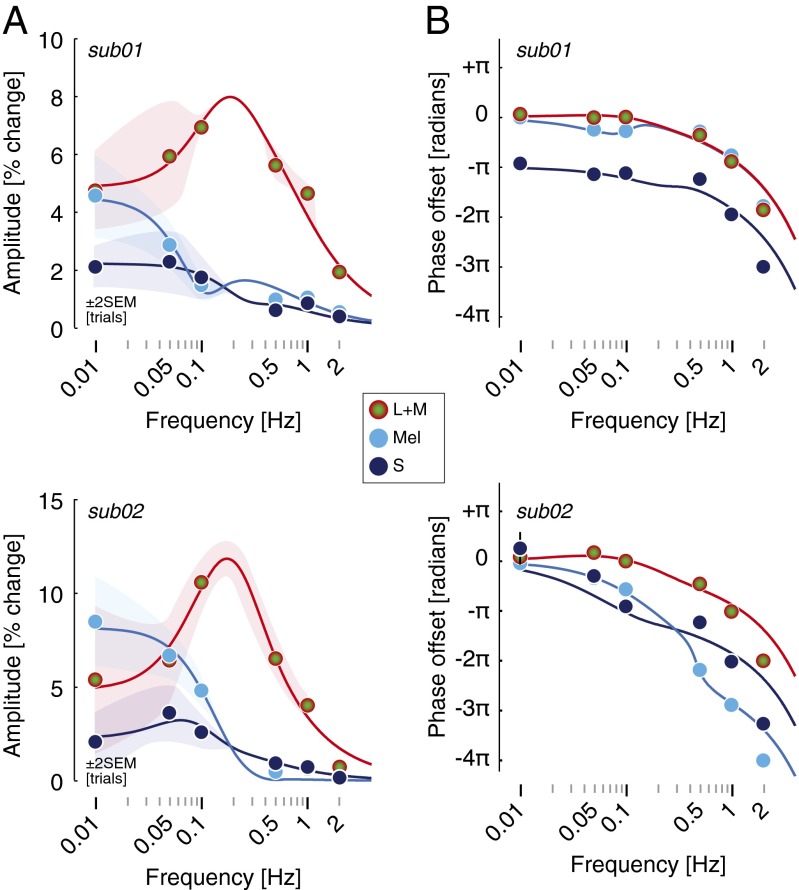Fig. 4.
A two-component linear filter model accounts for the photoreceptor-specific temporal transfer functions of the PLR via S-cone opponency. (A) Amplitude of the PLR fundamental for three photoreceptor-directed modulations from two subjects. Points show data and solid lines show the fit of the linear filter model. The sign of the S input to the fast component of the model is negative relative to the sign of the L+M and melanopsin input. (B) Phase of the PLR fundamental of the pupil as a function of stimulus temporal frequency. Error bars are generally smaller than plot symbols.

